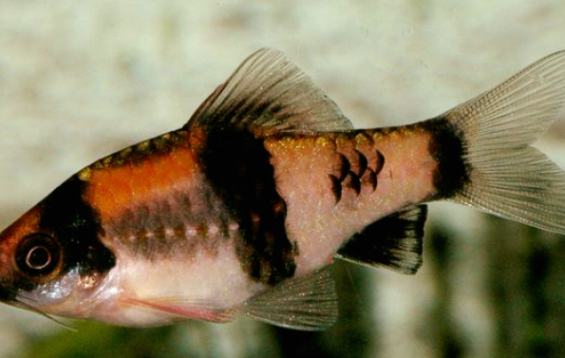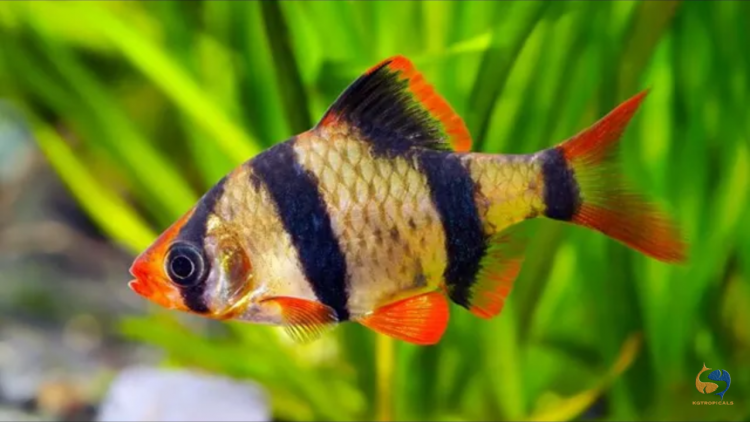- Name:
Panda Barb
(View AKA's) - Family: Cyprinidae
- Species: Barbs
- Scientific Name: Puntius fasciatus


General info about Panda Barb
These fish are usually silver with 4 black vertical stripes, however, different varieties in which the color and the number of stripes varies can be found in some locations. They can reach 5 inches. To keep these fish in captivity, water temperature should range from 60ºF to 77ºF and water pH should be between 6.0 and 7.5. The tank should have a dark sand substrate, dense vegetation and be dimly lit. Panda Barbs can be kept in a community tank as long as its tankmates aren’t slow-moving fish. These fish should be kept in groups of at least 8.
Panda Barb Diet & Nutrition
This species is omnivorous. In the wild, it feeds on diatoms, algae, insects and worms. In an aquarium it can be fed with dried, frozen and live foods. Its diet should include vegetable matter.
Determining Sex of Panda Barb
Mature females are larger and rounder while males are more colorful.
Breeding & Spawning Panda Barb
These fish are egg-scatterers that exhibit no parental care. The adults will eat the eggs if given the chance so once the eggs are fertilized the adults should be removed. The eggs will hatch in 24 to 48 hours and the fry will be free swimming 24h after hatching.
Panda Barb Origin
These fish can be found in Southern India.
Original Detail
| Name | Species | Family | Scientific Name | More Detail | Added by |
|---|---|---|---|---|---|
| Panda Barb | Barbs | Cyprinidae | Puntius fasciatus | These fish are usually silver with 4 black vertical stripes, however, different varieties in which the color and the number of stripes varies can be found in some locations. They can reach 5 inches. To keep these fish in captivity, water temperature should range from 60ºF to 77ºF and water pH should be between 6.0 and 7.5. The tank should have a dark sand substrate, dense vegetation and be dimly lit. Panda Barbs can be kept in a community tank as long as its tankmates aren’t slow-moving fish. These fish should be kept in groups of at least 8. |
PalaciosAn |
Changed by users
| Submitted Date | Submitted By | Status | Action |
|---|



